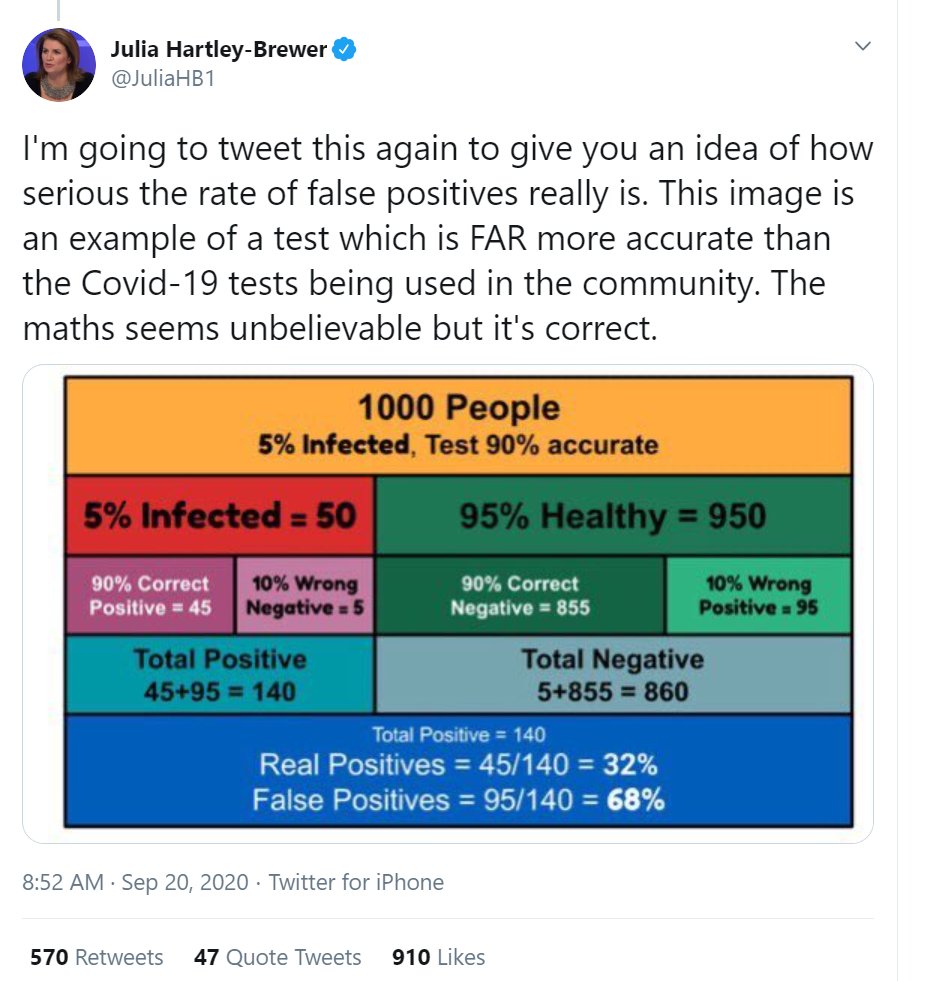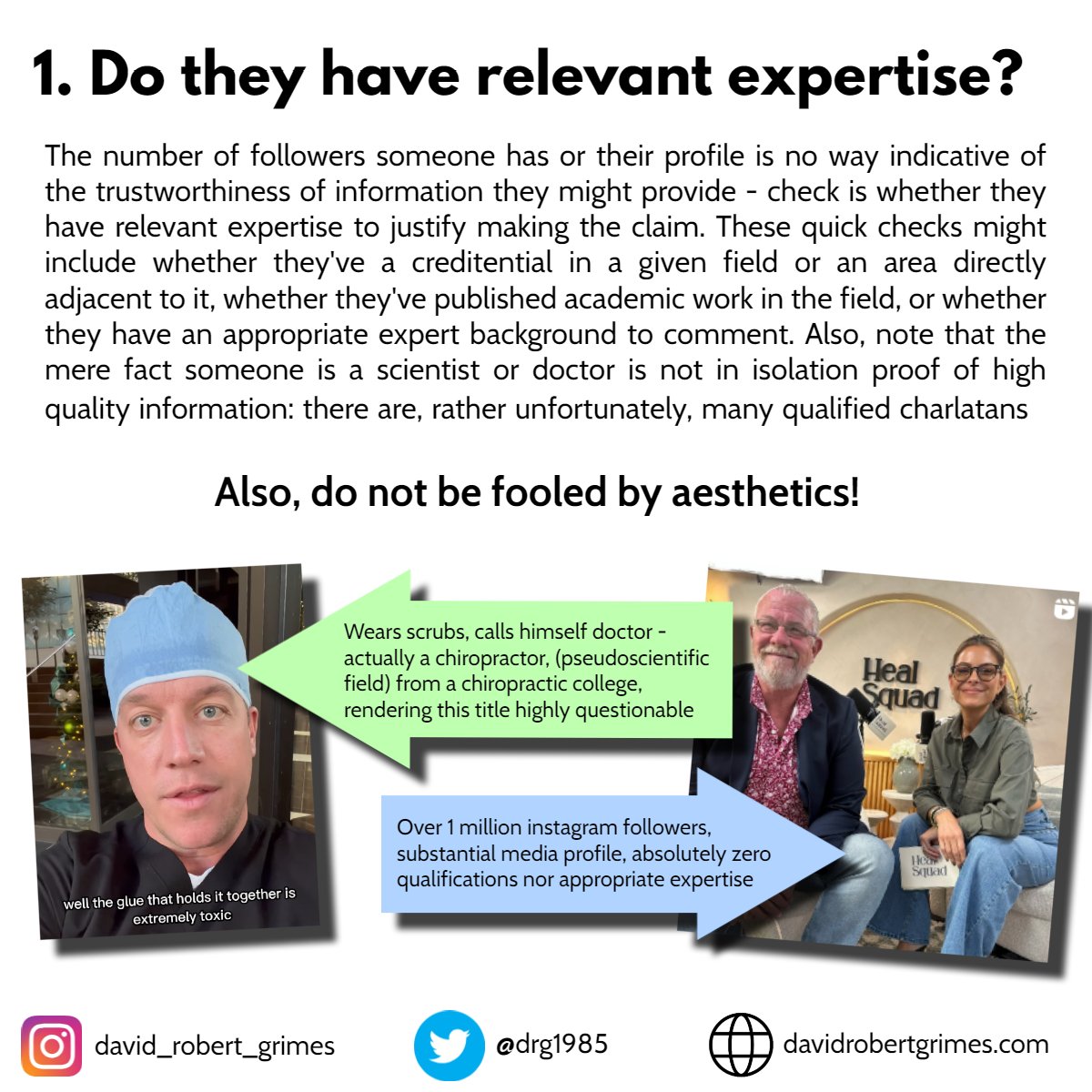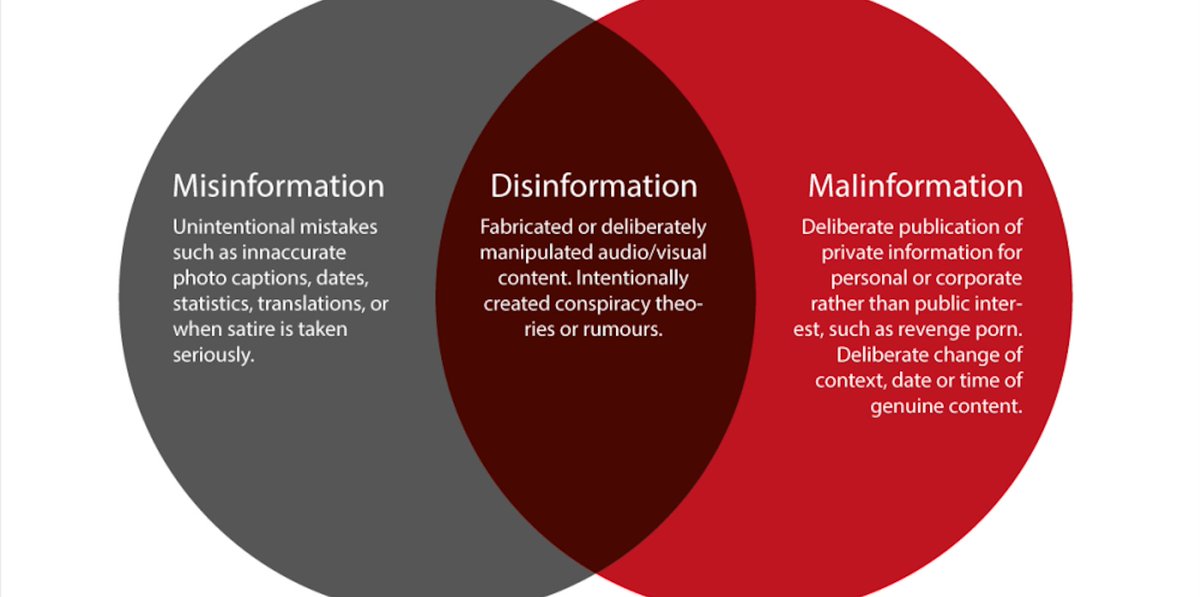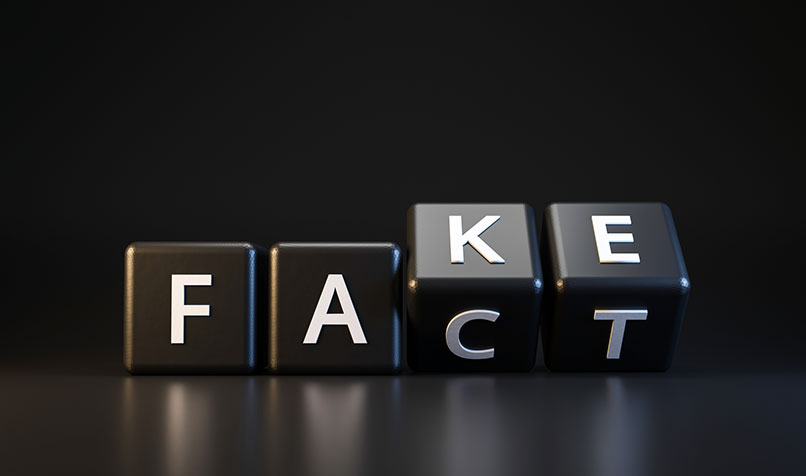Hi @JuliaHB1 - your claim here is highly misleading, and misunderstands #CovidTesting. I'll try explain why: firstly, the sensitivity of PCR #COVID19 test is ~98%, specificity 98.9%. Now, false positives & negative rates depend on prevalence of COVID in test population... (1/n) 

...we can simulate this as prevalence changes, like I just did here, showing test PPV (chances a positive is a true positive) and NPV (chances a negative result is true negative) as prevalence increases. At your 5% prevalence, a positive test is 82% likely to be correct (2/n) 

..but the impressive part is the NPV: this is close to 100%, and tells us that a negative result is, in general, highly reliable (with some caveats). That is really important to know, as it means we can have confidence in negative results. That's extremely important! (3/n)
If prevalence is low, than a positive test is of course less reliable, as you can see on the graph. But if you have a + test and symptoms, your a priori probability of having COVID is high. If you've a false +, you'll remain asymptomatic, & re-test will likely show no COVID (4/n)
To conclude, NPV extremely useful by itself to rule out COVID, & asymptomatic positives are easily re-tested & corrected. This, by the way, is a difficulty in ALL medical screening, but it doesn't detract from utility of testing. Hope this helps. (5/5, n = 5)
Post-script: @CillianDeGascun had an excellent thread on PCR testing for those curious, and @Kit_Yates_Maths / @GidMK great on this kinda stuff too.
• • •
Missing some Tweet in this thread? You can try to
force a refresh
















